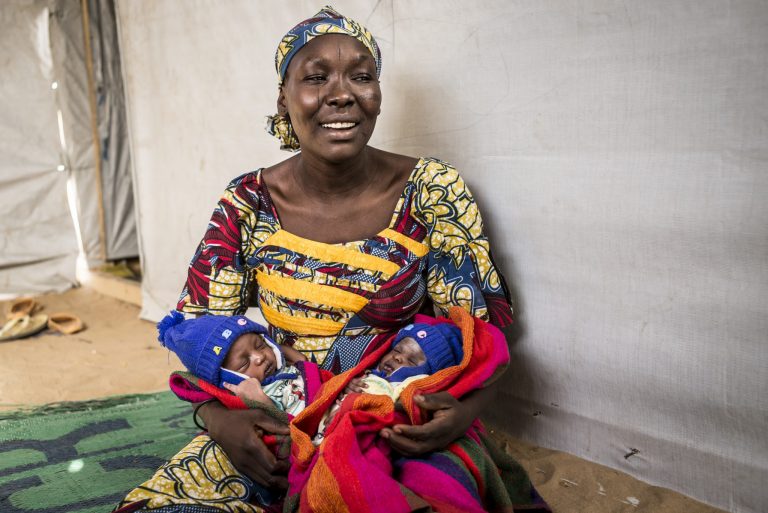Each year, nearly three million newborns die within the month of life with the leading causes of death during this period being preterm birth complications, complications during labour and delivery, and infection. This is a critical challenge in low-resource countries where 98% of all newborn deaths occur and where many of these deaths could be prevented through low-cost, highly-effective interventions addressing essential newborn needs. One such intervention that has been used widely in many low-resource countries is Helping Babies Survive, developed by the American Academy of Pediatrics and their partners. With the significant number of studies that have been published on Helping Babies Breathe and the growing use of Essential Care for Every Baby and Essential Care for Small Babies modules, a systematic review was conducted on the Helping Babies Survive program. Recently published, this review examined the impact of the Helping Babies Survive suite of programs on newborn outcomes and healthcare provider knowledge and skills.
After reviewing over 350 articles, a total of seventeen studies were included in the review, with fifteen on Helping Babies Breathe and two on Essential Care for Every Baby published up to the end of December 2016. No studies were found on Essential Care for Small Babies. This is likely due to Helping Babies Breathe being available since 2010 while the other two modules being released more recently, 2014 and 2015 respectively. The seventeen studies were from eleven different countries including five from India, four in Kenya and Tanzania, and one each in Nepal, Ghana, Ethiopia, Sudan, Madagascar, Rwanda, Honduras, and Pakistan. The studies were quite diverse in experimental design, data collection time points, and location of implementation yet the findings provide important insights into the effectiveness of Helping Babies Survive program on newborn and healthcare provider outcomes across a range of countries where the program is being implemented. Due to these differences in reporting, meta-analysis on key outcomes were only on particular studies.
Does it save lives?
The primary question of interest for many is whether the Helping Babies Survive program saves lives. Due to the lack of newborn outcomes reported in the Essential Care for Every Baby studies, the current review could only consider newborn outcomes for the Helping Babies Breathe module. Through meta-analysis, Helping Babies Breathe was found to significantly reduce the number of fresh stillbirth and first day mortality rate, with five fewer fresh stillbirth deaths and four fewer first day deaths per 1000 live births compared to before training. This finding is consistent with the inclusion of only Helping Babies Breathe studies which focuses on training to provide immediate resuscitation within the first 60 seconds after birth.
While fresh stillbirth rates declined, stillbirth rates were not significantly changed after Helping Babies Breathe training as there is not much that can be done at the moment of birth for a stillborn newborn who is unlikely to benefit from bag and mask ventilation. However, programs such as Helping Mothers Survive can be used to bridge this gap and improve the prenatal care of mothers and fetuses through similar training of healthcare providers. Additionally, early newborn mortality at 7 and 28 days was not significantly impacted by Helping Babies Breathe training which may be better addressed through the Essential Care for Every Baby and Essential Care for Small Babies modules, suggesting the need for more studies on these modules to determine the impact of the full program.
Does it increase the knowledge and skill of healthcare providers?
When examining the impact of the Helping Babies Survive program on healthcare provider outcomes, studies on Essential Care for Every Baby were included in some of the analysis, when available. Knowledge, measured through the standardized multiple-choice questionnaires, was found to significantly improve when tested immediately before and after training and were able to be maintained over time. However, when measuring skill through the complex Observed Structured Clinical Exam (OSCE), scores decreased when followed up 3-8 months after being trained. Yet, when provided with refresher training, routine and complex OCSE skill improved to similar levels achieved after initial training. Evidence suggests that frequent, simulation-based training can improve training uptake when given the opportunity to practice skills, but future research is needed on the most effective methods for providing training to maximize uptake and use.
One of the greatest challenges in Helping Babies Survive training is the transfer of knowledge and simulation skills into the clinical setting, as the initial learning appears high but the use in clinical practice appears low. Four studies reported on the use of suction, stimulation, and bag and mask in clinical practice before and after training with time points ranging from 2-12 months pre-training to 6-24 months post-training. Interestingly, despite the decrease in fresh stillbirth rates and first day mortality, there was no significant change in use of stimulation, suction, or bag and mask ventilation after training in clinical practice.
Recommendations
- Future Helping Babies Survive training should include ongoing training and supervision to ensure that learners have the opportunity for continued practice and training.
- Collaboration with hospital administrators and government is essential for the successful implementation and sustainability of the Helping Babies Survive program to ensure low-dose, high frequency training.
- Further research is needed on Essential Care for Every Baby and Essential Care for Small Babies to evaluate their effectiveness on improving newborn outcomes and healthcare provider knowledge and skills.
- Continued research on the sustained knowledge and skills is needed to evaluate the long-term impact of initial training, as well as the impact of practice and potential training updates for all modules in Helping Babies Survive
- Increased rigour in monitoring and evaluation of newborn outcomes is needed including Helping Babies Survive training provided through pre-service training as well as in-service training.
For more information, check out the full review “The impact of the Helping Babies Survive program on neonatal outcomes and health provider skills: a systematic review”.
